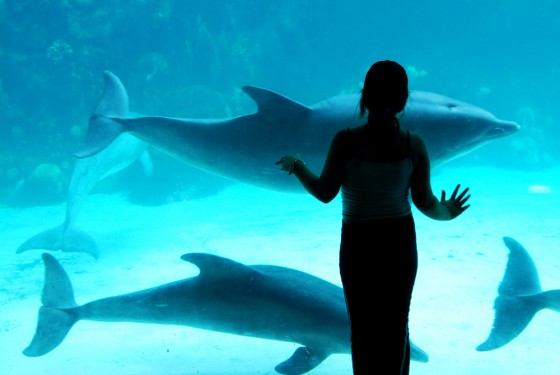 A small documentary released this summer has created a reputational riptide for SeaWorld. Blackfish, directed by Gabriela Cowperthwaite, combines park footage and interviews with trainers and scientists to explore the impact of keeping killer whales for entertainment – and, ultimately, examines the possible factors that led one such whale to kill three people in captivity. The film has outraged animal rights activists and casual audience members alike with footage of brutal whale-on-human attacks at the parks and haunting tales of a natural order torn apart to keep 12,000-pound animals in captivity. SeaWorld’s attempts to head off criticism by emailing an itemized rebuttal to critics has drawn widespread publicity, but many have interpreted the move as defensive and further damning.
A small documentary released this summer has created a reputational riptide for SeaWorld. Blackfish, directed by Gabriela Cowperthwaite, combines park footage and interviews with trainers and scientists to explore the impact of keeping killer whales for entertainment – and, ultimately, examines the possible factors that led one such whale to kill three people in captivity. The film has outraged animal rights activists and casual audience members alike with footage of brutal whale-on-human attacks at the parks and haunting tales of a natural order torn apart to keep 12,000-pound animals in captivity. SeaWorld’s attempts to head off criticism by emailing an itemized rebuttal to critics has drawn widespread publicity, but many have interpreted the move as defensive and further damning.
This week, it became clear that Pixar has taken note of the movie – and the backlash. The animation studio decided to rewrite part of the upcoming sequel to Finding Nemo that referenced a SeaWorld-like facility.
The plot is reportedly still in flux for Finding Dory, currently scheduled for release in November 2015. Ellen DeGeneres is set to star as Dory, an amnesiac blue fish who cannot remember who raised her, according to the L.A. Times. Initial plans for the movie saw characters ending up in a marine park for fish and mammals. But now, the aquatic center will be differentiated from SeaWorld by giving the animals the option to leave.
With theatrical release over two years away, Pixar could probably do nothing and still avoid the cloud of negative press hovering over SeaWorld as a result of Blackfish. Cowperthwaite confirmed that she screened Blackfish on the Pixar grounds and told the L.A. Times that employees appeared deeply “impacted” by the documentary, but she would not comment on any connection between her film and Finding Dory. The change may be an emotional response – having seen Blackfish opening weekend, I can personally attest that it’s a moving documentary that made me develop a real interest in orcas and the conditions for both animals and trainers at SeaWorld.
But Pixar’s move is also a clear attempt at mitigating reputational risk.
By getting in the plot change now, the company turns the tide on conversation about using aquatic animals for entertainment and preempts any ties between their blockbuster-to-be and the current controversy over cruelty. Further, adjusting the plot demonstrates an engagement with their subject matter and concern for their audience. From a studio known for their silence on any projects in the works, this very public adaptive response is a definitive publicity win – and a great example of proactive risk management.
SeaWorld Entertainment Inc. reported earnings of $77.4 million in 2012, and total revenue rose 7% from 2011 to over .
4 billion, according to the Orlando Sentinel, and the company launched an IPO in April 2013 with a valuation of $2.5 billion. Attendance also grew last year, as more than 24 million people visited one of the chain’s 10 parks. It’s a big fish to hunt. But after grossing just over $1 million in limited release over the last month, Blackfish has managed to become a harpoon in the company’s side.
CNN recently picked up Blackfish and will air the documentary in October, so we can only assume there will be further uproar this fall.

